Rajesh Kumar Muthu
Medical Image Enhancement Using Histogram Processing and Feature Extraction for Cancer Classification
Mar 14, 2020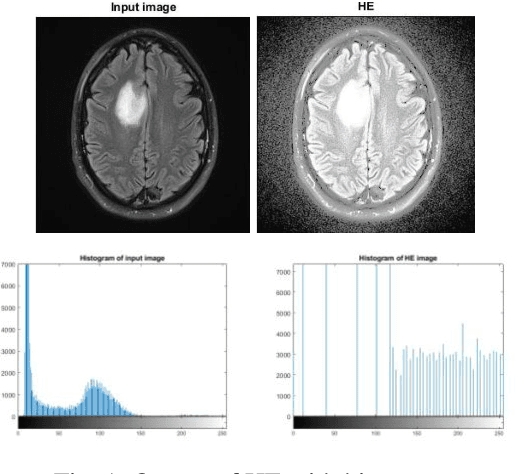
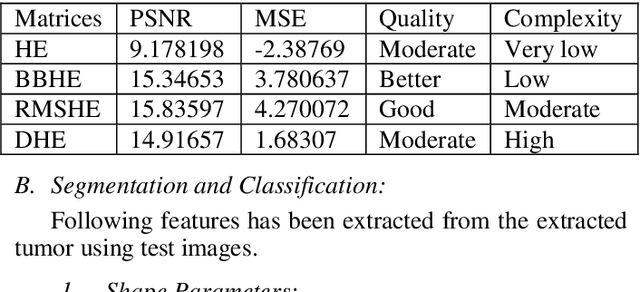

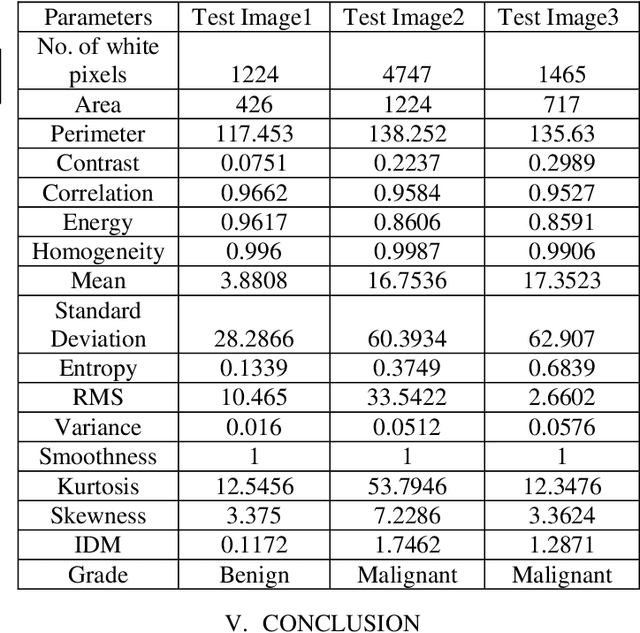
Abstract:MRI (Magnetic Resonance Imaging) is a technique used to analyze and diagnose the problem defined by images like cancer or tumor in a brain. Physicians require good contrast images for better treatment purpose as it contains maximum information of the disease. MRI images are low contrast images which make diagnoses difficult; hence better localization of image pixels is required. Histogram Equalization techniques help to enhance the image so that it gives an improved visual quality and a well defined problem. The contrast and brightness is enhanced in such a way that it does not lose its original information and the brightness is preserved. We compare the different equalization techniques in this paper; the techniques are critically studied and elaborated. They are also tabulated to compare various parameters present in the image. In addition we have also segmented and extracted the tumor part out of the brain using K-means algorithm. For classification and feature extraction the method used is Support Vector Machine (SVM). The main goal of this research work is to help the medical field with a light of image processing.
Medicine Strip Identification using 2-D Cepstral Feature Extraction and Multiclass Classification Methods
Feb 03, 2020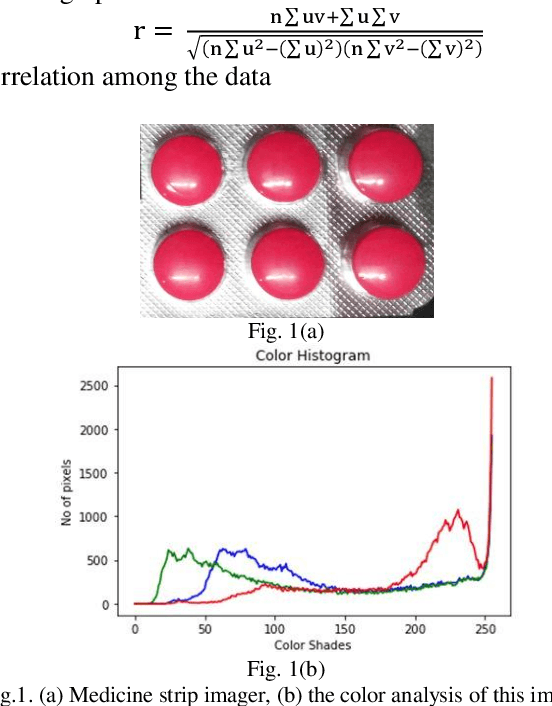

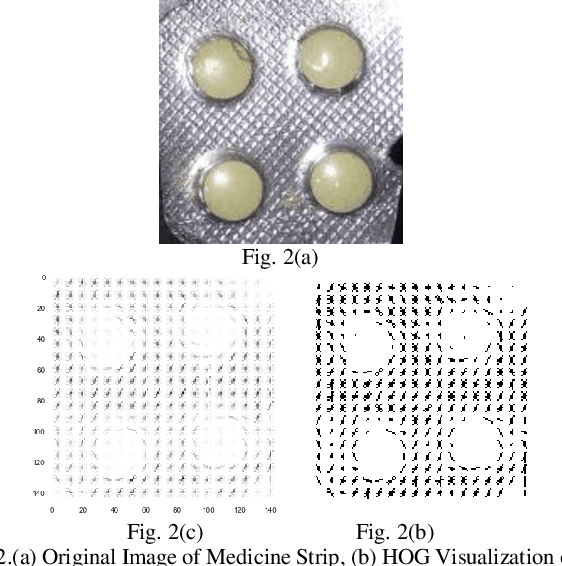
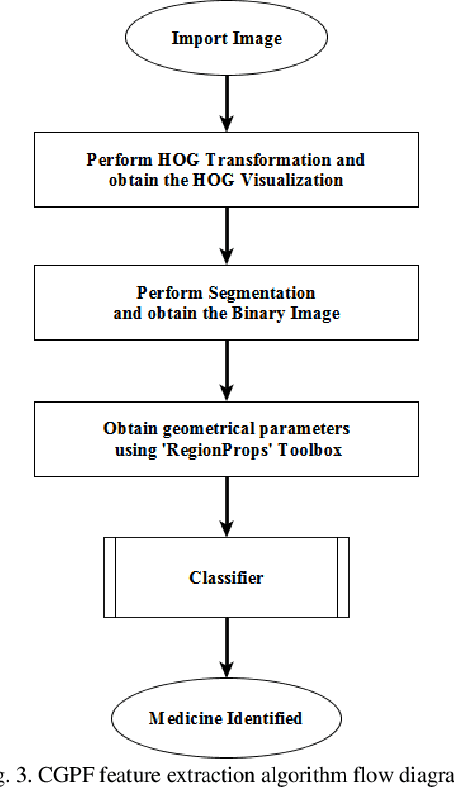
Abstract:Misclassification of medicine is perilous to the health of a patient, more so if the said patient is visually impaired or simply did not recognize the color, shape or type of medicine strip. This paper proposes a method for identification of medicine strips by 2-D cepstral analysis of their images followed by performing classification that has been done using the K-Nearest Neighbor (KNN), Support Vector Machine (SVM) and Logistic Regression (LR) Classifiers. The 2-D cepstral features extracted are extremely distinct to a medicine strip and consequently make identifying them exceptionally accurate. This paper also proposes the Color Gradient and Pill shape Feature (CGPF) extraction procedure and discusses the Binary Robust Invariant Scalable Keypoints (BRISK) algorithm as well. The mentioned algorithms were implemented and their identification results have been compared.
A New De-blurring Technique for License Plate Images with Robust Length Estimation
Feb 17, 2018

Abstract:Recognizing a license plate clearly while seeing a surveillance camera snapshot is often important in cases where the troublemaker vehicle(s) have to be identified. In many real world situations, these images are blurred due to fast motion of the vehicle and cannot be recognized by the human eye. For this kind of blurring, the kernel involved can be said to be a linear uniform convolution described by its angle and length. We propose a new de-blurring technique in this paper to parametrically estimate the kernel as accurately as possible with emphasis on the length estimation process. We use a technique which employs Hough transform in estimating the kernel angle. To accurately estimate the kernel length, a novel approach using the cepstral transform is introduced. We compare the de-blurred results obtained using our scheme with those of other recently introduced blind de-blurring techniques. The comparisons corroborate that our scheme can remove a large blur from the image captured by the camera to recover vital semantic information about the license plate.
Generating Analytic Insights on Human Behaviour using Image Processing
Nov 21, 2017
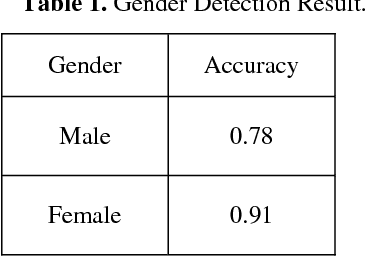
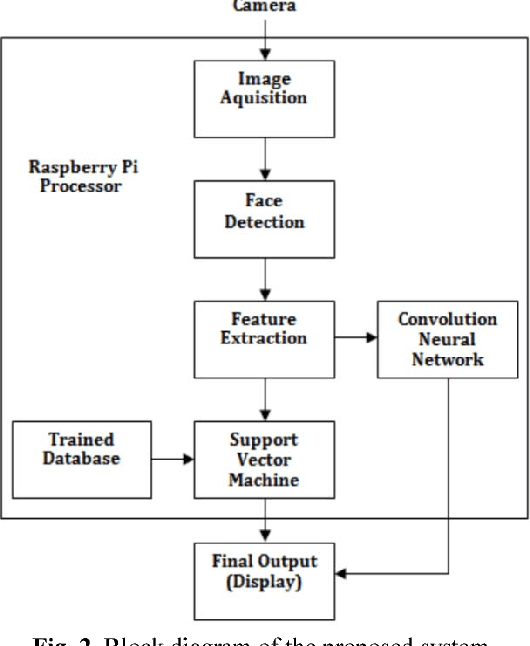

Abstract:This paper proposes a method to track human figures in physical spaces and then utilizes this data to generate several data points such as footfall distribution, demographic analysis,heat maps as well as gender distribution. The proposed framework aims to establish this while utilizing minimum computational resources while remaining real time. It is often useful to have information such as what kind of people visit a certain place or what hour of the day experiences maximum activity, Such analysis can be used improve sales, manage huge number of people as well as predict future behaviour. The proposed framework is designed in a way such that it can take input streams from IP cameras and use that to generate relevant data points using open source tools such as OpenCV and raspberryPi.
 Add to Chrome
Add to Chrome Add to Firefox
Add to Firefox Add to Edge
Add to Edge